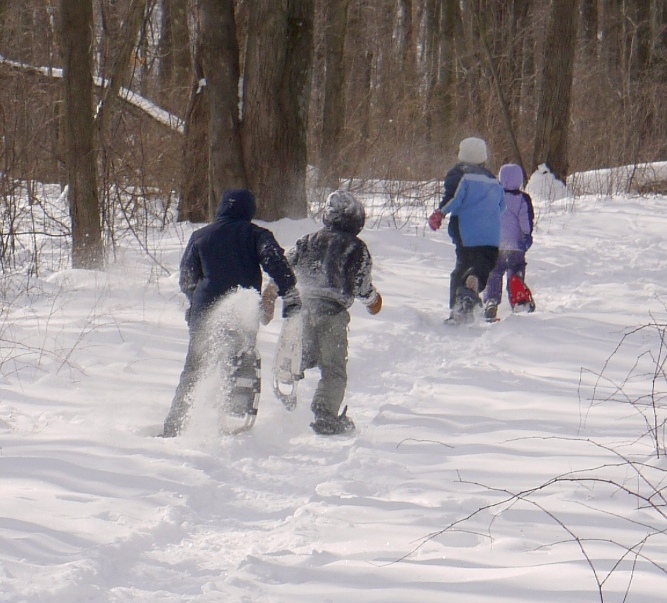 What’s one of the best ways to make the most of all the snow we’ve been getting across the state? Snowshoeing, of course!
What’s one of the best ways to make the most of all the snow we’ve been getting across the state? Snowshoeing, of course!
Wandering out into the woods to quietly look or listen for birds and other signs of wildlife is a winter experience that can be quite spectacular, whether you are with a group or on your own. Not only is it fun, but snowshoeing offers a fantastic low-impact workout.
How to Snowshoe
The first snowshoers were undoubtedly inspired by nature’s own snow-ready creatures such as wolverines, mountain lions, wolves, penguins, and, of course, snowshoe hares. These creatures have long, wide feet that support them even on deep snow, allowing them to travel quite a distance for food or shelter, if necessary.
So how do they work? Physics! Snowshoes are designed to disperse your weight across a greater surface area, which give you the ability to walk on top of several inches (or feet) of snow.
Once you have the snowshoes strapped on, you’ll use a motion similar to walking with a few modifications. You will want to lift your knees while widening and lengthening your stride to make sure not to step on the frames. Some snowshoers opt for poles, which can help increase your stability and add upper body involvement.
Where to Snowshoe
Nearly all of Mass Audubon’s wildlife sanctuaries welcome snowshoeing. Several offer equipment to rent or borrow as well, including Boston Nature Center, Broad Meadow Brook in Worcester, Oak Knoll in Attleboro, Pleasant Valley in Lenox, and Wachusett Meadow in Princeton. We recommend calling ahead to check on availability.
And when there is snow, sanctuaries offer guided snowshoe programs.
Got a great snowshoe location of your own? Share in the comments!
– by Emma Evans

